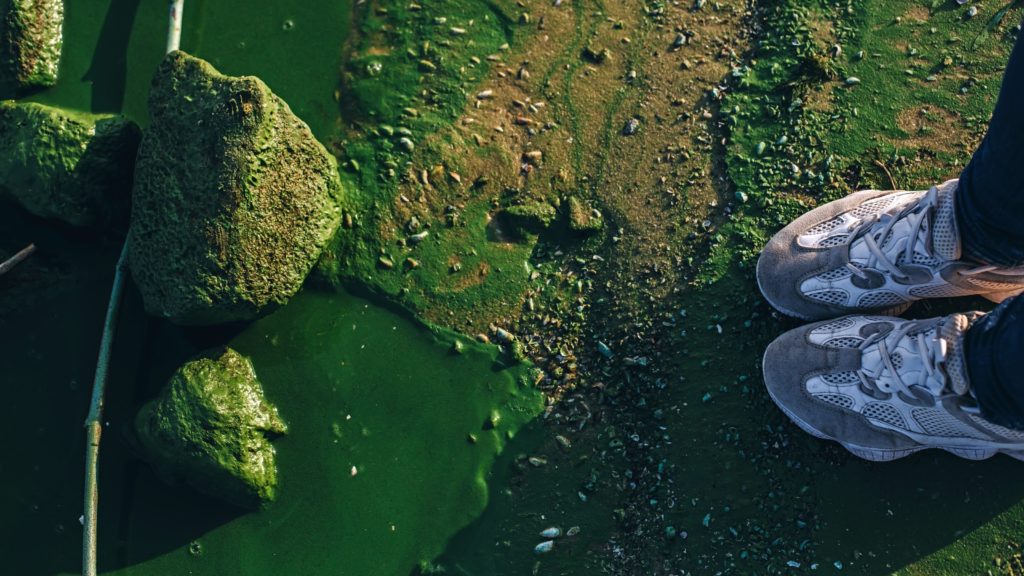
Phosphorus (P) is one of the most important nutrients in agricultural systems when used and applied properly. In natural environments or properly tested quantities, phosphorus is a valuable nutrient and fertilizer that promotes plant growth and development. However, in excess, phosphorus can create problems in our waterways and drinking water called eutrophication. When phosphorus pollution (runoff) enters our lakes, rivers and streams, it causes green scum and harmful algae blooms that can deplete waterways of oxygen, cause fish kills, damage ecosystems or even result in “dead zones” in larger bodies of water.
Our homes — via yards, driveways, appliances and pets — contribute to nutrient pollution. Fortunately, there are many strategies that individuals can do to help reduce phosphorus runoff. Here are a few simple ways to reduce phosphorus pollution in local lakes, rivers, streams and your watershed.
Off the streets
Keep leaves, grass clippings and other organic matter off the streets. Avoid blowing leaves or clippings into areas where they can wash into storm sewers. Once in the water, phosphorus from clippings and leaves can grow algae. Blow or bag your leaves, keep your clippings on the grass and use other organic matter as fertilizer.
Low P fertilizers
Use no-phosphorus or low-phosphorus fertilizer on lawns and gardens to avoid over-fertilizing. Look for package formulas of nitrate-phosphorus-potassium with a middle number (which represents phosphorus) of zero. For example, 22-0-15 indicates no phosphorus. Lower phosphorus fertilizers are also an option; look for numbers like 13-2-13 or 20-3-19.
roots that go deep
Plant buffers of deep-rooted plants in landscaping and along shoreline properties. Natural plantings or using plants with deep roots do a better job of absorbing and filtering runoff during rain events and can provide habitat for wildlife.
control pet poo-llution
Pick up pet waste from yards, parks and shorelines whenever possible. Pet waste contains phosphorus (and other nutrients and bacteria) that can pollute water when it rains and create runoff poo-llution when it is not disposed of properly.
Drain smart
Direct downspouts to lawns and plant beds and use landscaping practices that stop or slow runoff from your property. By aiming your downspouts into landscapes, versus hard surfaces like sidewalks and driveways, you can reduce runoff to storm drains. Water will be better able to soak into the ground.
Watch Your Soaps
Use low- or no-phosphate cleaning products. Some soaps, detergents and household cleaners contain a form of phosphorus called phosphates. Choosing phosphate-free products can help minimize pollution.
The good news? Phosphates were banned nationally from laundry detergents in 1994. And in 2010, 17 U.S. states (including Wisconsin!) banned phosphates in automatic dishwasher detergent.
At the Car Wash
Use a commercial carwash that properly disposes of (or recycles) wastewater. If you choose to wash your car at home, wash your car on grass or gravel so water is better filtered before going down the drain.
Inspect tanks
Regularly inspect and pump out your septic system. When a septic system fails or is not managed properly, phosphorus and nitrogen can be released into local water bodies or groundwater. According to the EPA, about 10% to 20% of septic systems fail during their operational lifetimes!
These are just a few ways you can reduce phosphorus runoff and water pollution in your community. For additional pollution prevention tips and tricks, check out the Pollution Prevention section of our blog. Be sure to check out the Phosphorus page on our website to learn more about our P reduction initiatives at the District.
Article written by Amy Steger






